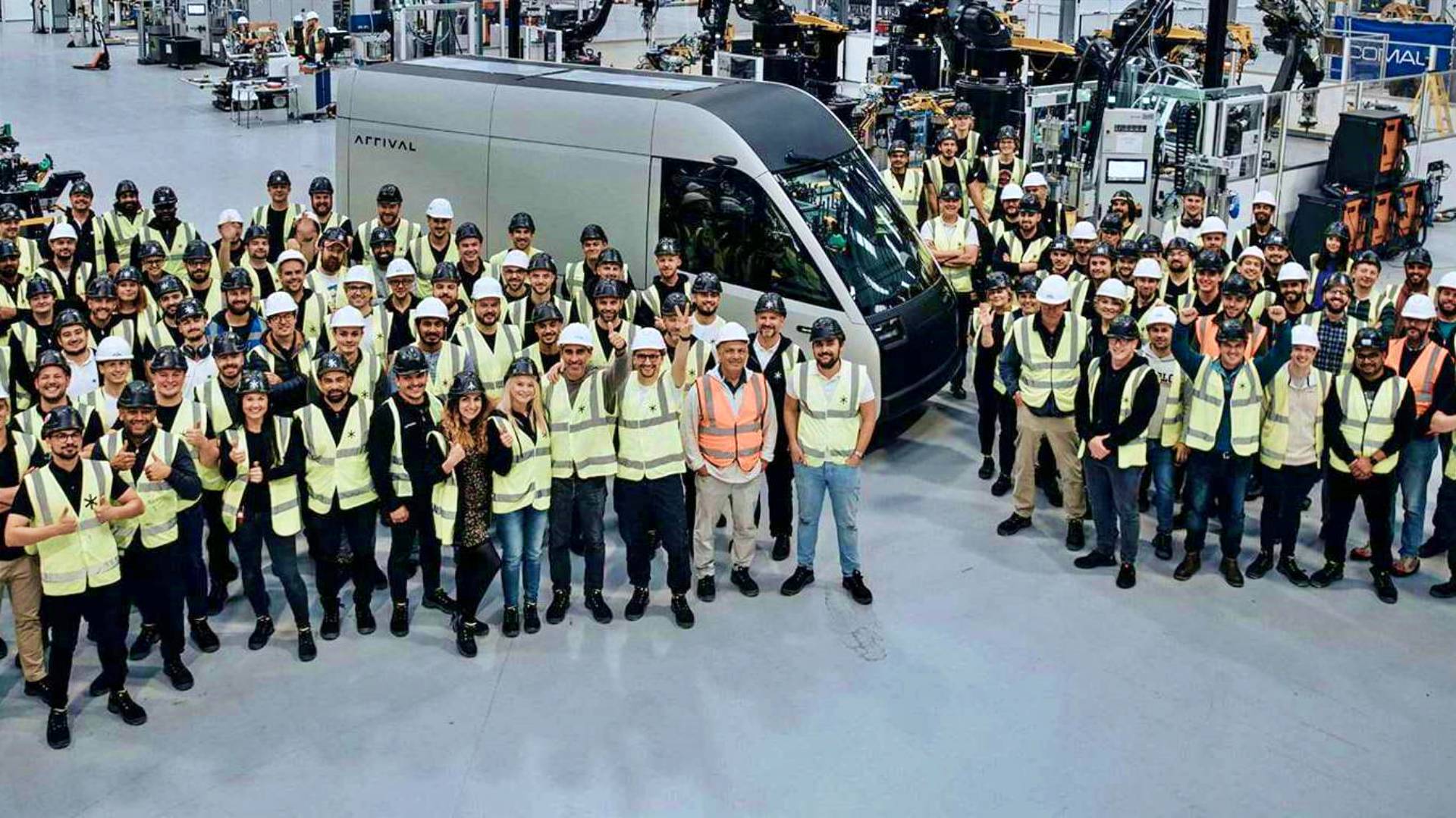
Local logistics is one of the segments with the greatest potential for electrification because they do not need large batteries, and their journeys are usually in urban areas and at low speed. A section where the British Arrival has seen an important market niche and for which it has developed an attractive electric van. Today they have celebrated the exit of the production line of their first unit.
This has left the factory in Bicester, Oxfordshire. A plant that stands out for aspects such as its high level of automation and the extensive presence of autonomous robots, and where software is one of the main protagonists.
Arrival’s goal is to develop a new, radically more efficient production method that will allow everything from designing, producing, selling, and servicing an industrial electric vehicle to putting an alternative to combustion engine models on the road. A new method that does not use a traditional assembly line and that can be quickly and economically adapted to the needs of each client.
According to those responsible for Arrival, it is a unique approach to producing vehicles using rapidly scalable local micro-factories. A vertically integrated business model, they indicate, is the best way to have a rapid impact on society’s transportation needs.
The first units will not be destined for customers but will serve to complete a series of internal tests, in a project that intends to begin these deliveries before the end of this year.

As we recall, this van is built with an aluminum frame and composite material body panels to save as much weight as possible. There will be a total of eight variants (four lengths and three height options). Depending on the version, the payload can reach 1,975 kilos, while the cargo volume is up to 14 m3.
Depending on the size, the battery capacity will vary between 67 and 133 kWh, reaching a maximum range of between 180 and 340 kilometers depending on the WLTP cycle. An offer will be completed later with a 44 kWh access battery, which will allow a cheaper version to be carried out.
A seed that will later serve to launch two other projects that are in the pipeline for Arrival, such as an electric car designed for taxi or VTC services, and an electric and solar bus.
Arrival van: summary
- Four lengths and three height variants.
- Up to 14 m 3 load capacity and up to 1,975 kilos of payload (depending on the version).
- Four battery/range options:
- 67 kWh: 180 km (WLTP)
- 89 kWh: 240 km (WLTP)
- 111 kWh: 290 km (WLTP)
- 133 kWh: 340 km (WLTP)
- 120km/h top speed
- Front-wheel drive
- Fast charging: up to 120 kW
- AC charging: up to 11 kW